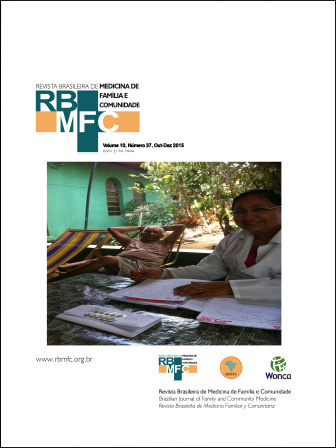A doubtful beginning, an incognito ending–A case of tinea incognito
DOI:
https://doi.org/10.5712/rbmfc10(37)1015Keywords:
Tinea, Adrenal Cortex Hormones, Administration, CutaneousAbstract
Tinea incognito is caused by the modification of ringworm after treatment with immunosuppressants, normally topical steroids, which mask its typical characteristics, and result in the progression of the original fungal infection. This is a case of a 71-year-old man who developed a clinical picture involving "bites" [sic], pain, and discomfort in the right forearm, associated with papular vesicular lesions that were pinkish in color and non-pruritic. The patient was evaluated and medicated with antivirals, antibiotics, and nonsteroidal anti-inflammatory drugs with no success. He developed violaceous papular-pustular lesions with scaling in about 1 month. After a therapeutic trial with an antifungal agent and the discovery of the patient’s chronic use of topical corticosteroids, a diagnosis of tinea incognito was established. This diagnosis presents a challenge to the general practitioner due to its similarity to various dermatological conditions.
Downloads
Metrics
References
Segal D, Wells MM, Rahalkar A, Joseph M, Mrkobrada M. A case of tinea incognito. Dermatol Online J. 2013;19(5):18175.
Kim WJ, Kim TW, Mun JH, Song M, Kim HS, Ko HC, et al. Tinea incognito in Korea and its risk factors: nine-year multicenter survey. J Korean Med Sci. 2013;28(1):145-51. DOI: http://dx.doi.org/10.3346/jkms.2013.28.1.145 DOI: https://doi.org/10.3346/jkms.2013.28.1.145
Pinto-Almeida T, Selores M. Caso dermatológico. Nascer Crescer. 2011;20(4):288-9.
Verma S, Heffernan MP. Superficial Fungal Infection: Dermatophytosis, Onychomycosis, Tinea Nigra, Piedra. In: Wolff K, Goldsmith LA, Katz SI, Gilchrest BA, Paller AS, Leffell DJ, eds. Fitzpatrick´s Dermatology in General Medicine. 7th ed. New York: McGraw Hill; 2008. p.369-72.
Gupta AK, Cooper EA, Ryder JE, Nicol KA, Chow M, Chaudhry MM. Optimal management of fungal infections of the skin, hair, and nails. Am J Clin Dermatol. 2004;5(4):225-37. DOI: http://dx.doi.org/10.2165/00128071-200405040-00003 DOI: https://doi.org/10.2165/00128071-200405040-00003
Downloads
Published
How to Cite
Issue
Section
License
By submitting a manuscript to the RBMFC, authors retain ownership of the copyright in the article, and authorize RBMFC to publish that manuscript under the Creative Commons Attribution 4.0 license and identify itself as the vehicle of its original publication.















